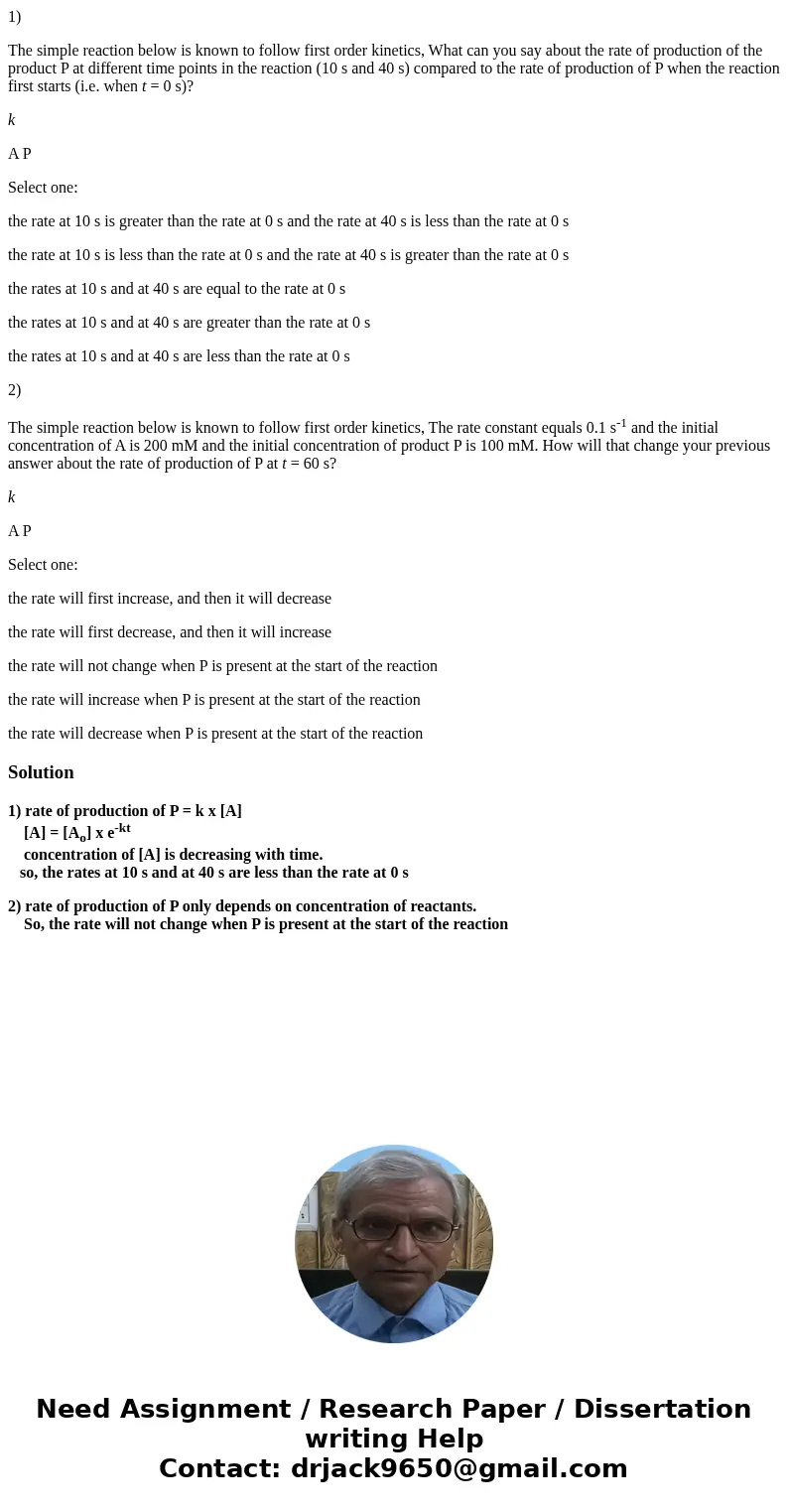1 The simple reaction below is known to follow first order k
1)
The simple reaction below is known to follow first order kinetics, What can you say about the rate of production of the product P at different time points in the reaction (10 s and 40 s) compared to the rate of production of P when the reaction first starts (i.e. when t = 0 s)?
k
A P
Select one:
the rate at 10 s is greater than the rate at 0 s and the rate at 40 s is less than the rate at 0 s
the rate at 10 s is less than the rate at 0 s and the rate at 40 s is greater than the rate at 0 s
the rates at 10 s and at 40 s are equal to the rate at 0 s
the rates at 10 s and at 40 s are greater than the rate at 0 s
the rates at 10 s and at 40 s are less than the rate at 0 s
2)
The simple reaction below is known to follow first order kinetics, The rate constant equals 0.1 s-1 and the initial concentration of A is 200 mM and the initial concentration of product P is 100 mM. How will that change your previous answer about the rate of production of P at t = 60 s?
k
A P
Select one:
the rate will first increase, and then it will decrease
the rate will first decrease, and then it will increase
the rate will not change when P is present at the start of the reaction
the rate will increase when P is present at the start of the reaction
the rate will decrease when P is present at the start of the reaction
Solution
1) rate of production of P = k x [A]
[A] = [Ao] x e-kt
concentration of [A] is decreasing with time.
so, the rates at 10 s and at 40 s are less than the rate at 0 s
2) rate of production of P only depends on concentration of reactants.
So, the rate will not change when P is present at the start of the reaction

 Homework Sourse
Homework Sourse